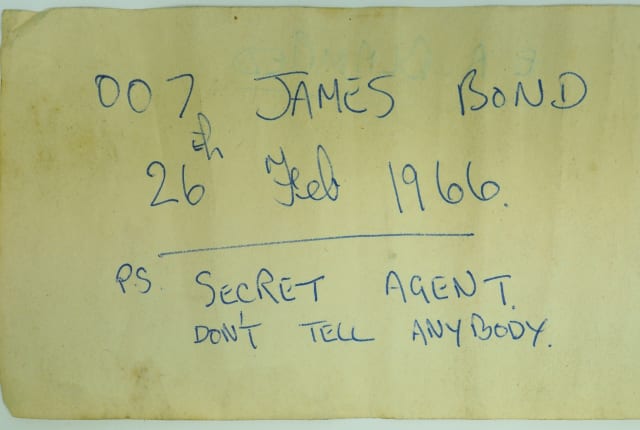
Instituted by Queen Victoria in 1856 by Royal Warrant, the Victoria Cross is the highest military decoration awarded for valour to members of the armed forces
Victoria Cross awarded to George Henry Ingouville (1857)
Within the collections, Jersey Heritage looks after five Victoria Cross medals. Instituted by Queen Victoria in 1856 by Royal Warrant, the Victoria Cross is the highest military decoration awarded for valour to members of the armed forces. To date, over 1,300 VCs have been awarded, although only 16 have been awarded since 1956. The first Jerseyman to receive a Victoria Cross was George Henry Ingouville, for an act of bravery in 1855.
George Ingouville was born in St Saviour, Jersey on 7th October 1826, the eldest son of Pierre (Peter) Ingouville and Elizabeth Marie (née French).
On 6th July 1851, Ingouville joined the Royal Navy and worked aboard the HMS Trafalgar for 3 years, before he was promoted to Captain of the Mast and transferred to HMS Samson in 1854. Both ships were in the Black Sea during the Crimean war and were present at the Siege of Sebastopol.
Ingouville joined te HMS Arrogant in 1855 when he was 28 years old; it was during his service on this ship that his actions would see him awarded the Victoria Cross. HMS Arrogant, under the command of Rear Admiral The Honourable RS Dundas, entered the Baltic in March 1855 during the Eastern Campaign.
On 13th July 1855, HMS Arrogant was engaged in action with enemy gunboats and batteries at the Fort of Viborg in the Gulf of Finland. Whilst engaged, HMS Arrogant’s second cutter was swamped by the blowing up of her magazine, and the cutter began to drift towards enemy guns. A Mr Story, the Midshipman in command, was killed in this explosion. The cutter would have been lost but Ingouville, with a wound to his arm, jumped into the sea and turned the boat around, towing her away from a Russian battery, all the while under heavy enemy fire. Lieutenant G. D. Dowell, having seen what was happening from aboard the HMS Ruby, came to Ingouville’s aid with three volunteers, rescuing both the damaged cutter and its crew. Dowell was also awarded a VC for his actions.
George Ingouville was one of only five to be awarded for valour in the Baltic campaign. He was also awarded the Conspicuous Gallantry Medal, the Crimean Medal, the Baltic Medal and the Turkish Medal for his actions in the Crimea. The Victoria Cross was presented to him by Queen Victoria at the first investiture at Hyde Park on 26th June 1857. He was one of 62 men to receive the Victoria Cross at this time. The artist George Housman Thomas painted the scene at Hyde Park, which depicts Queen Victoria presenting Ingouville with his award. Ingouville is the only VC recipient to have been visually recorded receiving the cross from Queen Victoria. The original watercolour painting is held by the Royal Collections Trust.
While serving in the Royal Navy, George married Mary Anne Le Rossignol, the daughter of Captain Matthew Le Rossignol, on 4th April 1861 in Brighton. The couple did not have any children. Ingouville continued to serve in the Royal Navy until he finished his career in August 1863. He died at sea on 13th January 1869 when he was aged 41, but the circumstances around his death remain a mystery. There are no records to suggest that he was buried at sea and no burial records exist. There is a rumour that his body washed ashore at Hyeres in Southern France, but this claim has never been substantiated.
Ingouville’s Victoria Cross came up for sale at Spink & Son auction house in the 1970s and was purchased by the Government of Jersey’s Public Works Committee, now under the care of Jersey Heritage. What is interesting about this VC is the fact that it has a crimson ribbon, when naval recipients should receive a blue ribbon. It is possible that Ingouville was handed the wrong one at the presentation. The medal is on permanent display at the Maritime Museum.












